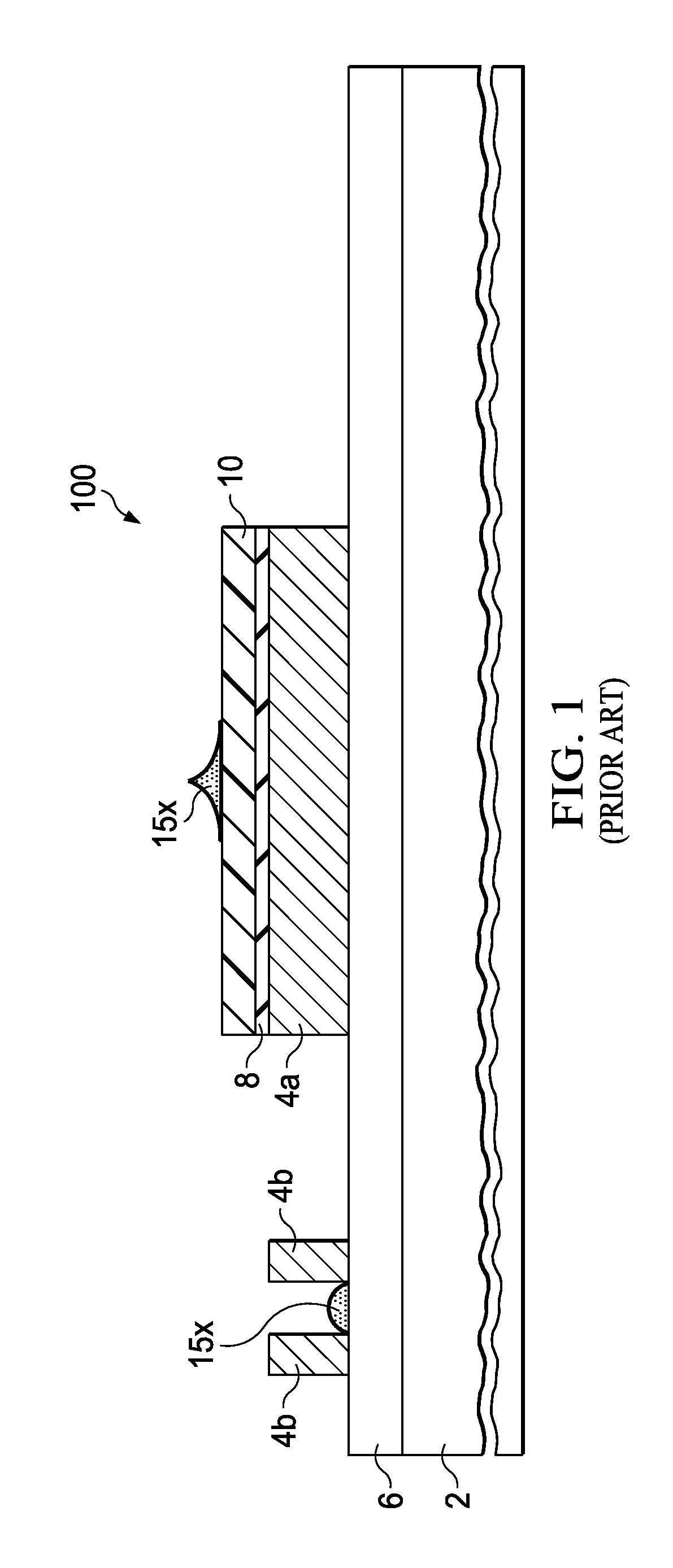Method of fabricating metal-bearing integrated circuit structures having low defect density
a technology of integrated circuit and defect density, which is applied in the direction of basic electric elements, electrical appliances, capacitors, etc., can solve the problems of undesired lateral and vertical dimensional changes, undesired etching steps, and inability to meet the requirements of the integrated circuit, so as to reduce the number of process steps and process time, and prevent further cross-linking of polymers formed. , the effect of low defect density
- Summary
- Abstract
- Description
- Claims
- Application Information
AI Technical Summary
Benefits of technology
Problems solved by technology
Method used
Image
Examples
Embodiment Construction
[0021]This invention will be described in connection with one or more of its embodiments, namely as implemented into a manufacturing process for fabricating a particular integrated circuit having elements formed of metal or metal compounds. However, it is contemplated that this invention may also be beneficial when applied to other processes and in connection with other applications. In particular, while an example of this invention is described in detail in connection with the fabrication of a parallel-plate capacitor in an integrated circuit, this invention is no more particularly directed to the forming of a capacitor than it is to the forming of any other integrated circuit element or structure. Accordingly, it is to be understood that the following description is provided by way of example only, and is not intended to limit the true scope of this invention as claimed.
[0022]Referring now to FIG. 2, which depicts a flow chart for a process 200 for fabricating metal-bearing struct...
PUM
| Property | Measurement | Unit |
|---|---|---|
| temperature | aaaaa | aaaaa |
| temperatures | aaaaa | aaaaa |
| semiconducting | aaaaa | aaaaa |
Abstract
Description
Claims
Application Information
 Login to View More
Login to View More - R&D
- Intellectual Property
- Life Sciences
- Materials
- Tech Scout
- Unparalleled Data Quality
- Higher Quality Content
- 60% Fewer Hallucinations
Browse by: Latest US Patents, China's latest patents, Technical Efficacy Thesaurus, Application Domain, Technology Topic, Popular Technical Reports.
© 2025 PatSnap. All rights reserved.Legal|Privacy policy|Modern Slavery Act Transparency Statement|Sitemap|About US| Contact US: help@patsnap.com



